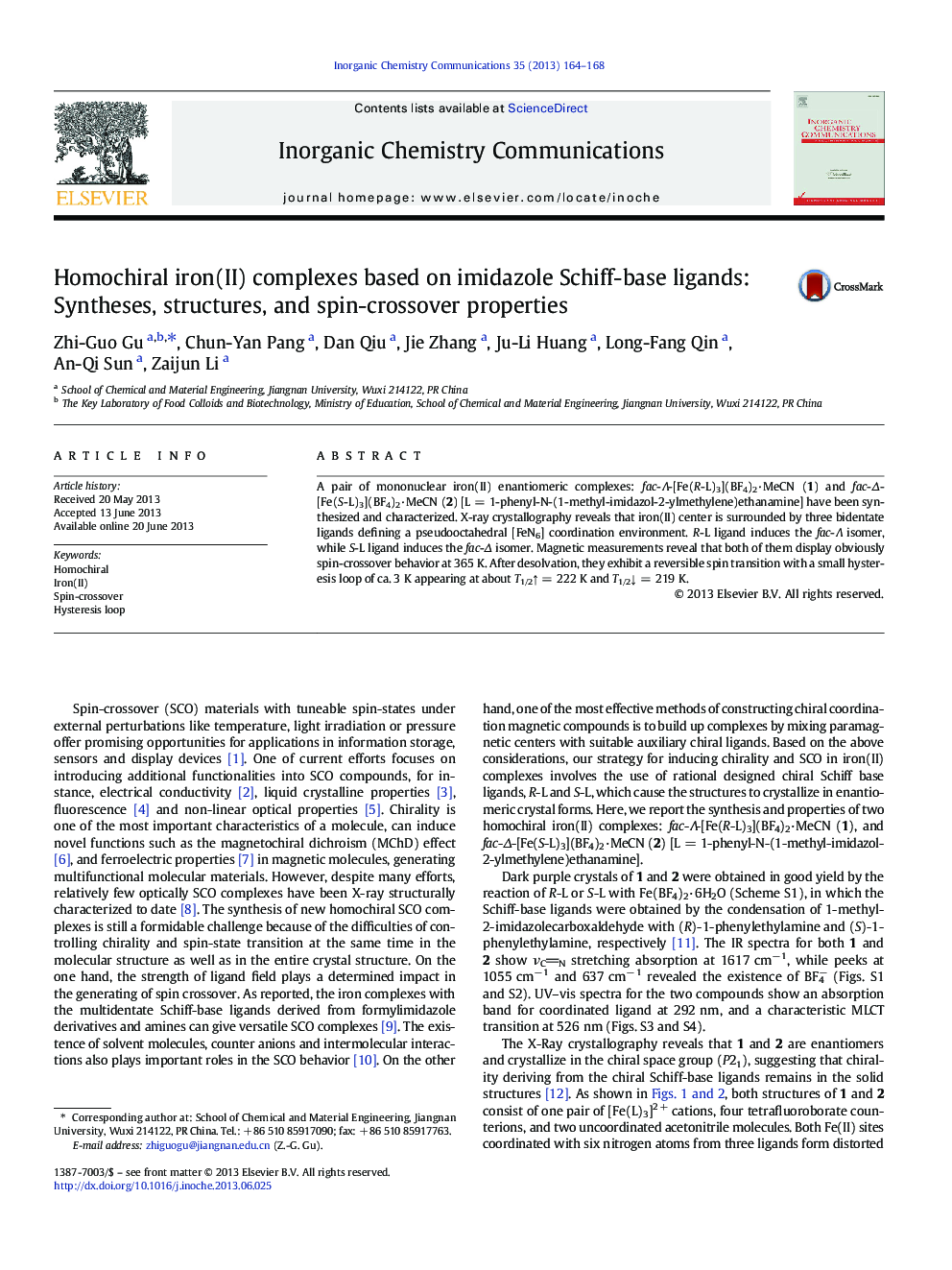| Article ID | Journal | Published Year | Pages | File Type |
|---|---|---|---|---|
| 1303851 | Inorganic Chemistry Communications | 2013 | 5 Pages |
•Homochiral iron(II) complexes based on imidazole Schiff-base ligands were reported.•R-L ligand induces the fac-Λ isomer, while S-L ligand induces the fac-Δ isomer.•Iron(II) enantiomeric complexes display obviously spin-crossover behavior.
A pair of mononuclear iron(II) enantiomeric complexes: fac-Λ-[Fe(R-L)3](BF4)2·MeCN (1) and fac-Δ-[Fe(S-L)3](BF4)2·MeCN (2) [L = 1-phenyl-N-(1-methyl-imidazol-2-ylmethylene)ethanamine] have been synthesized and characterized. X-ray crystallography reveals that iron(II) center is surrounded by three bidentate ligands defining a pseudooctahedral [FeN6] coordination environment. R-L ligand induces the fac-Λ isomer, while S-L ligand induces the fac-Δ isomer. Magnetic measurements reveal that both of them display obviously spin-crossover behavior at 365 K. After desolvation, they exhibit a reversible spin transition with a small hysteresis loop of ca. 3 K appearing at about T1/2↑ = 222 K and T1/2↓ = 219 K.
Graphical abstractTwo new homochiral iron(II) enantiomeric complexes have been synthesized and characterized. Magnetic measurements reveal that both of them display obviously spin-crossover behavior at 365 K. After desolvation, they exhibit a reversible spin transition with a small hysteresis loop appearing at about T1/2↑ = 222 K and T1/2↓ = 219 K.Figure optionsDownload full-size imageDownload as PowerPoint slide
